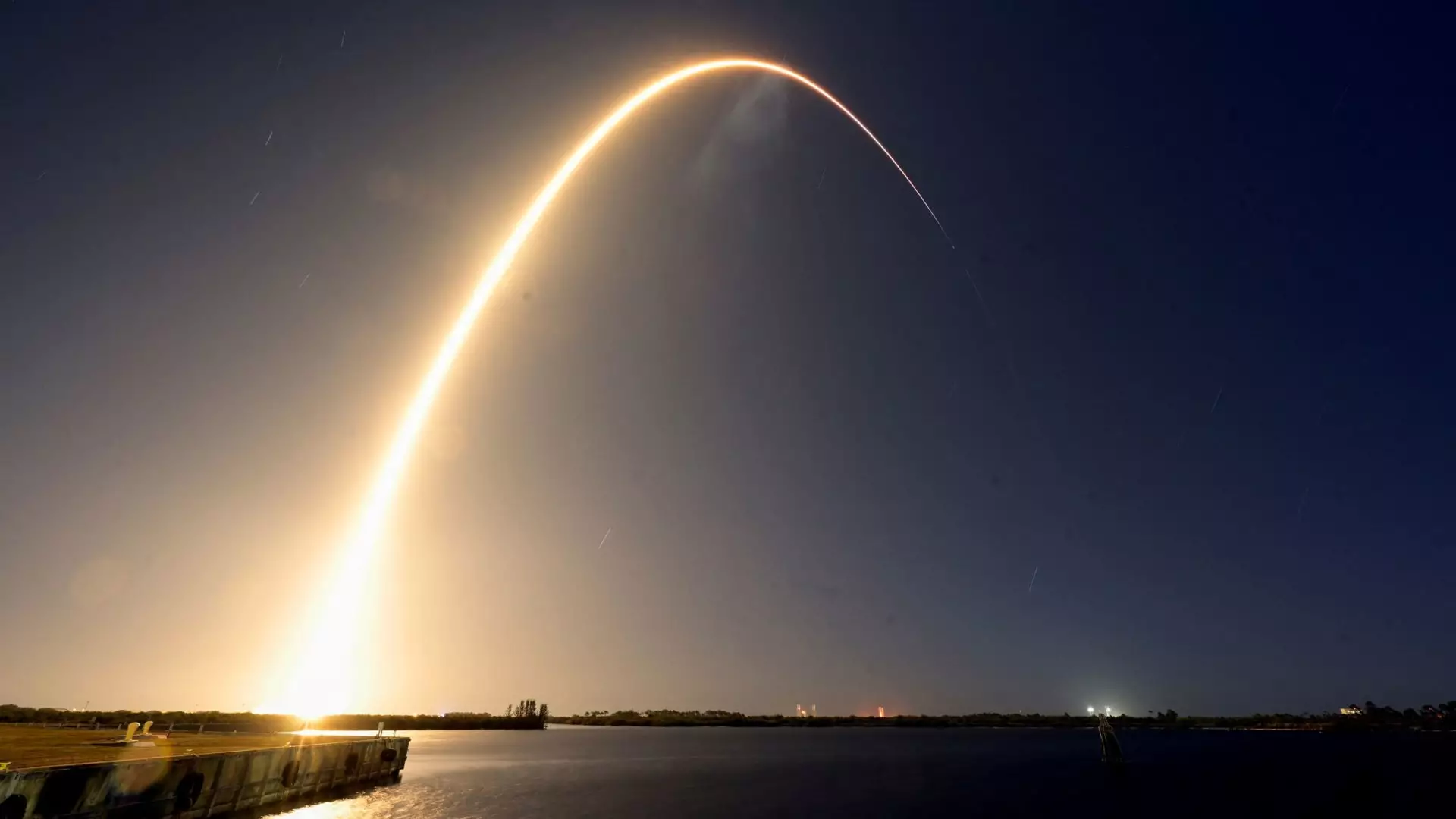With a commitment to advancing the frontiers of space exploration, American company Firefly Aerospace has embarked on a significant journey to the lunar surface with its “Blue Ghost” lander. Launched aboard SpaceX’s Falcon 9 rocket from Florida, this mission marks Firefly’s inaugural endeavor into the burgeoning market for lunar services, specifically targeting the NASA-driven initiatives aimed at reinvigorating human presence on the Moon. Aimed not just at exploration, this mission is a vital step in ushering in a new era of commercial space operations.
Firefly Aerospace has come a long way from its origins as a satellite launch provider predominantly known for its Alpha rockets. With the emergence of NASA’s Commercial Lunar Payload Services (CLPS) program, the company is strategically pivoting toward developing lunar landers and space tugs. The choice of the name “Blue Ghost” pays homage to a unique species of firefly native to the United States and symbolizes the company’s ambition to shine brightly in the expanding sphere of space exploration.
As part of a $101 million contract with NASA, the Blue Ghost lander is set to carry a payload of 10 government and commercial items to the Moon. The precision of this mission is critical as it signifies Firefly’s intention to establish a recurring presence on the lunar surface. The mission aims to accomplish a series of 17 milestones, with the successful landing of the spacecraft being the penultimate goal. Critical tests and operational assessments conducted post-launch confirm that five of these crucial milestones have already been achieved.
The lunar exploration landscape is no stranger to challenges. Firefly’s rivals, including Astrobotic and Intuitive Machines, have faced their share of hurdles. Astrobotic’s recent attempt ended in failure while Intuitive Machines barely survived a troubled landing. Such setbacks serve as reminders of the delicate nature of space missions and highlight the complexities involved in achieving reliable lunar landings. Consequently, Blue Ghost must tread cautiously yet ambitiously to forge a successful path amid competitive pressures.
On the launch morning, Firefly was not alone in its ventures; it was accompanied by Japan’s ispace, which has its own mission to regain confidence following a prior crash. This “rideshare” arrangement with SpaceX demonstrates the collaborative nature of modern space ventures, emphasizing that partnerships may play essential roles in enhancing missions’ success rates. As multiple companies strive to land on the Moon, the spirit of cooperation may very well define this new age of lunar exploration.
Scheduled to land on March 2, Blue Ghost aims for a targeted landing in Mare Crisium, a vast lunar basin on the Moon’s near side. Post-landing, Firefly intends to operate the lander for the duration of a lunar day—equivalent to approximately 14 Earth days—while extending its operational window into the harsh lunar night. This ambition showcases the technological capability and resilience Firefly aspires to embody, enabling ongoing research and experimentation in an environment renowned for its challenges.
As anticipation builds, the broader implications of this mission are profound. NASA envisions as many as five U.S. companies launching lunar landing missions this year, heralding a new chapter in lunar exploration driven by commercial interests. The successful execution of the Blue Ghost mission will not only enhance our understanding of lunar dynamics but also define future commercial endeavors toward exploration, research, and perhaps, even colonization.
Firefly Aerospace’s Blue Ghost is not just a spacecraft; it symbolizes the future of lunar exploration, driven by innovation, ambition, and collaboration between private companies and governmental agencies. With cumulative knowledge forged through successes and failures alike, Firefly is poised on the brink of a new frontier, striving to fulfill humanity’s enduring quest for knowledge beyond our planet. The next few weeks will be pivotal in determining the trajectory of this mission and the future of lunar exploration. As we watch this unfold, excitement and hope permeate the atmosphere, highlighting the endless possibilities that lie ahead.

